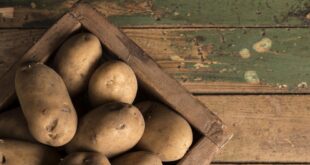 Worms are hard working little critters, and every successful garden needs them.
Worms are hard working little critters, and every successful garden needs them.
One of the wonderful folks in the oily rag community has shared her knowledge about how to get the most out of your vegetable patch – she keeps worms in her garden, to make compost and liquid fertiliser for the vegetable patch.
She feels it’s much better than putting kitchen scraps into the compost bin because the worms do the work and the by-product is much more potent than ordinary compost.
We too rave about worms. Worms are nature’s fertiliser machines and much better (and more fun) than buying commercial fertilisers. Here are some interesting facts discovered by our oily rag research team. Worms live in the top 150mm of the soil. Each day they munch their way through their own body weight in composting matter. The casts (worm poo!) are much more valuable as a growing medium than the organic matter the worm eats. Worm droppings contain six times the nitrogen content, seven times the phosphate content and twelve times the potassium content of soil.
Worms also produce 60% of their body weight in urine (worm wee!) each day. This liquid is a nitrogen concentrate that can be diluted 10:1 and used as a liquid plant food (i.e. add 10 parts water to one part worm wee). Besides producing valuable fertilisers, their worming around also aerates the soil and provides drainage.
Now some may think all worms are created equal. Well, that’s not the case at all! There are earth worms and then there are worms that specialise in chomping decaying organic material (in much the same way that some doctors specialise in paediatrics and others in geriatrics!). The more common composting worms are known as red worms, brandling worms, tiger worms, and red wiggler worms. You can generally tell them apart from the general every-day big fat lazy earth worm because they tend to be smaller, hyperactive when exposed, and they may have a reddish stripe.
Basically worms like eating stuff high in nitrogen. According to the experts ideal foods include fruit scraps, tea bags, coffee grinds, egg shells, horse manure, sea weed etc. lunch paper, paper bags, and corrugated cardboard. Avoid bread, citrus, meat, and dairy products.
These materials can be raw or cooked. They do not have to be ground up, as the micro-organisms in the bin will gradually soften them. Dairy products, meat and fatty gravy should not be added to the bin because they become stinky.
Soft garden waste such as carrot tops and tomato leaves are also suitable foods. An occasional sprinkling of garden soil in the bin gives the worms the grit they need to digest food. It’s not harmful to throw in an entire plant, but the worms will not process the woody parts or large roots (they haven’t got the right kind of teeth!). Worms cannot break down bone and are said to dislike highly spiced foods such as onions, garlic, salt, and hot curry – so it’s safe to assume worm farm worms did not originate from India!
There are lots of helpful web sites and books that explain how to make a worm farm. A good place to start is Worms R Us (www.wormsrus.co.nz). They show how you can make one out of recycled material like an old bath, but they also have household units available for those that do not have recycled material available. They also have worms available. By our calculations worms only cost between 2 and 3 cents each – but you will need at least 1000 so budget on $30.
Your local hardware stockist is also likely to have a range of worm farms available. Some are pretty fancy (and pricey) and look like a wheelie rubbish bin. We think a dressed up old bath is a good way to go.
It can take six to eight months for your worms to turn waste into castings and a year to reach full production. Castings (worm poo) can go can then go straight onto the garden or pot plants. Work the castings into the soil or turn it into liquid fertiliser by adding a handful into a bucket of water, stirring and leaving to sit for a few hours before applying.
You can see why worms have wormed their way into the hearts of thrifty gardeners – who said that living of the smell of an oily rag isn’t fun!
By Frank and Muriel Newman. Read more here.
Don’t forget to let us know if you have a favourite tip to share with readers, or a question – you can contact us via the website at oilyrag.co.nz or by writing to Living off the Smell of an Oily Rag, PO Box 984, Whangarei.









Claire - 9 years ago
Something the kids can get into as well, encouraging them to get into the garden and get their hands dirty